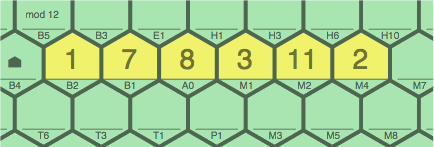
home page (§1-2-3) — introduction and rules
previous page (§7-8-9) — miscellaneous variations
next page (§11) — multiplicative variation
§10-1. There is an alternative to modular linear sequences, namely modular fibonacciësque sequences (theory).
Although the sequences of §2-4 are modular-linear when reckoned either in either direction, these fibonacciësque sequences have a forward direction and a backward direction. A sequence can be extended both forwards and backwards, but the method of calculation differs a bit.
As an introduction, consider the following sequence with a modulus of 12:
| figure 10A |

|
There are two equally valid ways of calculating the sequence 1 ~ 7 ~ 8 ~ 3 ~ 11 ~ 2 (compare §2-1):
A zero-slope sequence must add to the right and subtract to the left. Figure 10B is ILLEGAL because it does the opposite:
| ILLEGAL figure 10B |
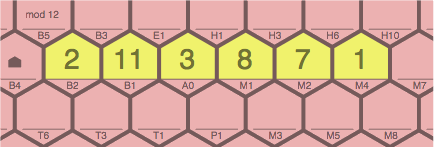
|
To prevent mistakes, arrows at the edge of the board are recommended to indicate the directions of addition, as in figure 10C:
| figure 10C | ||
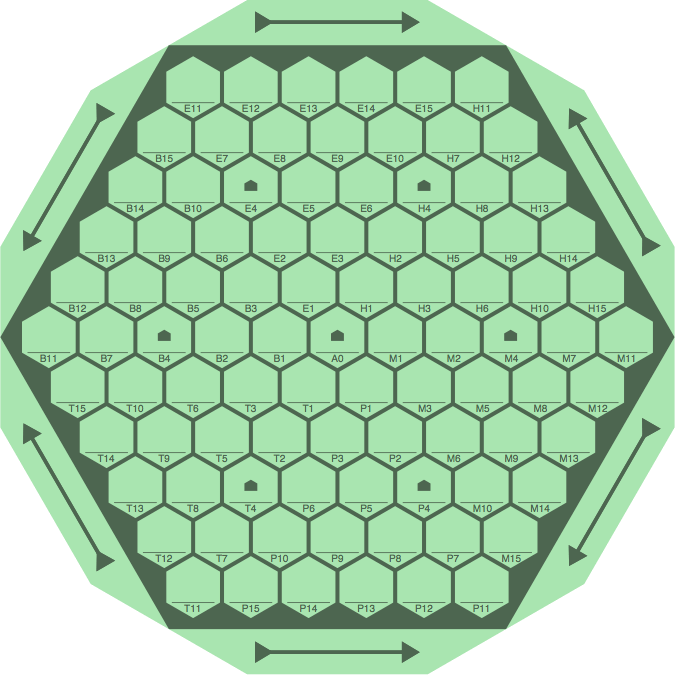
| ||
Sequences of positive slope add from upper right to lower left, as in figure 10D. Note in cell P8 the miniature arrows, not actually printed on the board, serving as a reminder of the correct directions of addition.
| LEGAL figure 10D | ILLEGAL figure 10E | |
|---|---|---|
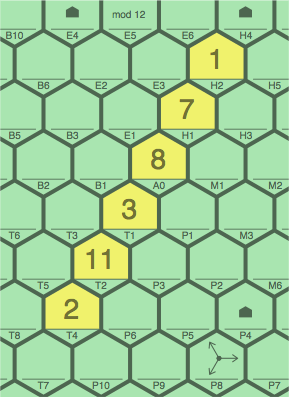
| 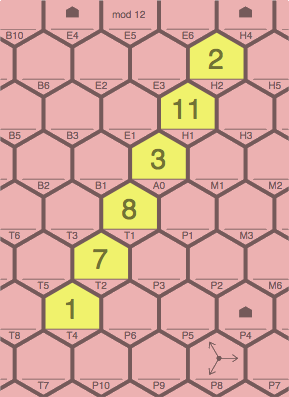
|
Sequences of negative slope add from lower right to upper left:
| LEGAL figure 10F | ILLEGAL figure 10G | |
|---|---|---|
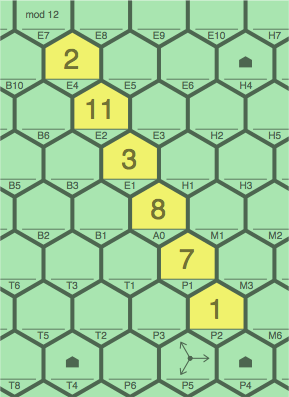
| 
|
Incidentally, the full sequence from which this example comes has a period of 24:
[ … 6 ~ 5 ~ 11 ~ 4 ~ 3 ~ 7 ~ 10 ~ 5 ~ 3 ~ 8 ~ 11 ~ 7 ~ 6 ~ 1 ~ 7 ~ 8 ~ 3 ~ 11 ~ 2 ~ 1 ~ 3 ~ 4 ~ 7 ~ 11 … ]
Once the modulus is selected, any two numbers define a valid sequence, even if they are two zeros:
[ … 0 ~ 0 ~ 0 ~ 0 ~ 0 … ]
Table 10A is a list of sequences for moduli from 1 through 20.
next page (§11) — multiplicative variation